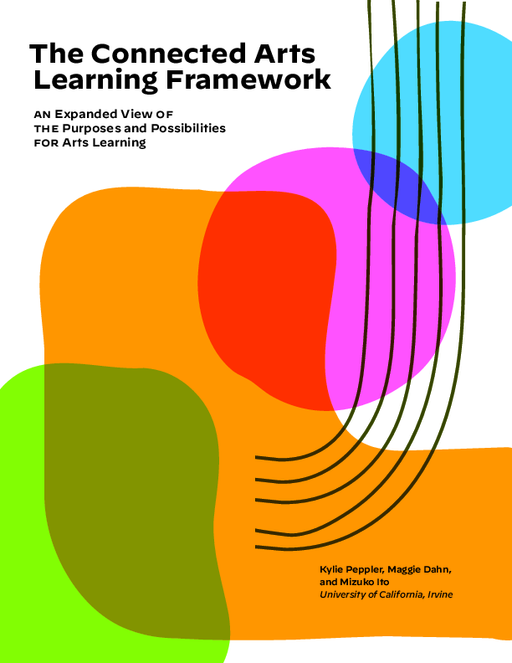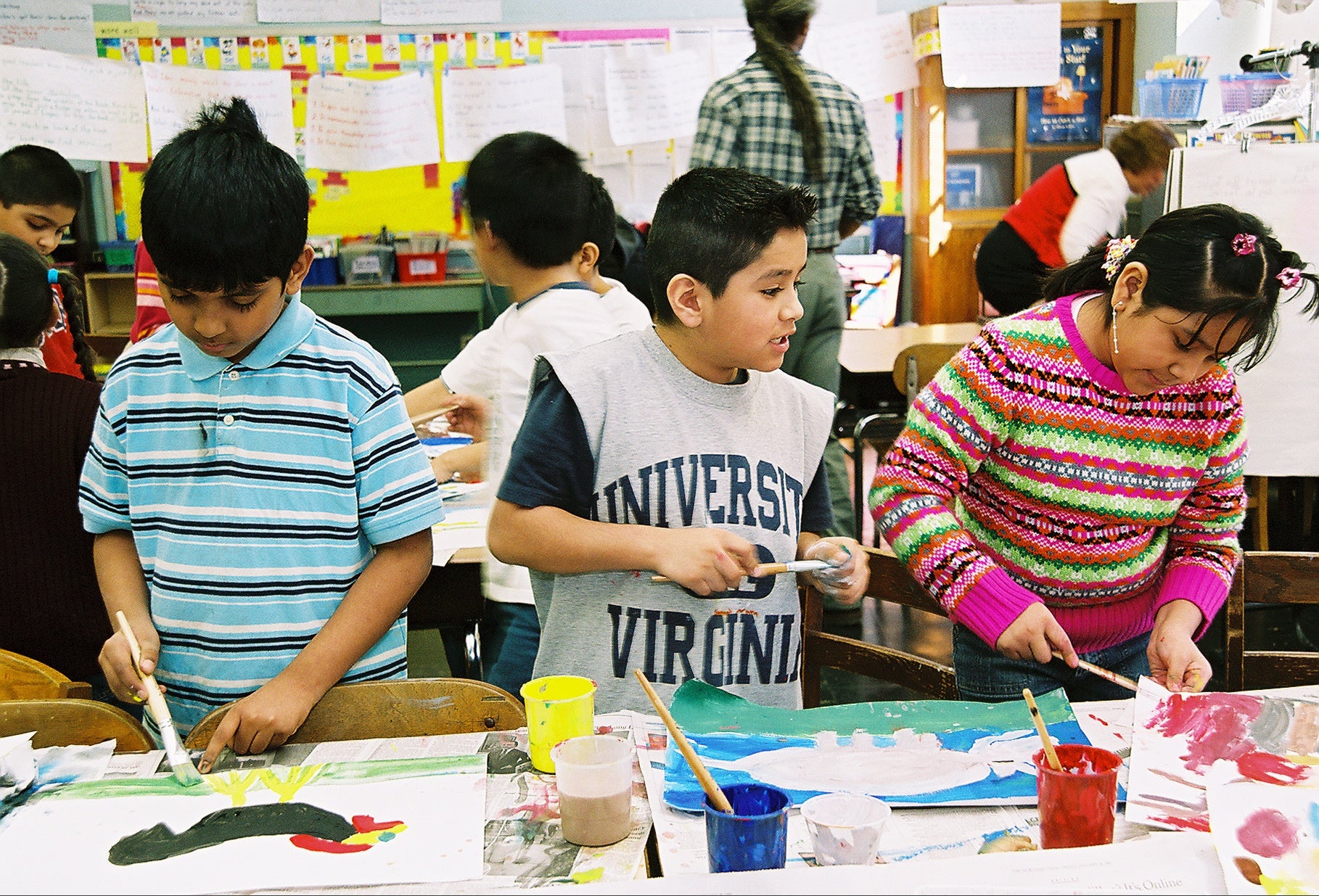Research Approach
The authors conducted a review of the arts education literature to uncover: 1) how practitioners tap young people’s interests to create meaningful and equitable learning experiences for them; 2) how key relationships (e.g., peers, mentors, family) help build networks for youth; and 3) how out-of-school arts experiences might connect participants to future learning opportunities. The review was followed by interviews with practitioners and investigations that led to case studies about the five approaches.
The literature review revealed gaps in research about arts learning from a connected learning angle, and vice versa. Researchers sought to:
- Explain how the connected arts learning framework unlocks possibilities for arts education
- Describe how the arts uniquely contribute to existing connected learning work, providing a rationale for the connected arts learning framework.
Literature Selection and Methods: The team researched two key portals for dialogue within the arts and connected learning fields:
- Arts Education Partnership’s ArtsEd Search (https://www.artsedsearch.org/): We read abstracts and key findings summaries for all 302 references available as of April 2021.
- The Connected Learning Alliance website (https://clalliance.org/publications): We reviewed the collection of 37 publications as of April 2021.
The systematic review across these sources of community dialogue resulted in 56 articles from the ArtsEdSearch database and 12 articles from the Connected Learning Alliance website. Researchers then queried these articles using a connected learning lens to review how creative arts experiences can democratize learning by cultivating interest-driven educational experiences, drawing on supportive relationships to build youth networks, and creating inroads to future opportunities. To do so, they categorized/coded each of the reviewed articles (Jesson et al., 2011; Philip & Gupta, 2020) according to the connected learning framework, breaking down each of the larger spheres (e.g., opportunities into academic, civic, and workforce opportunities) when the category reached 10 or more articles.
They organized the reviewed arts education literature through the three major focuses of connected learning—opportunities, interests, and relationships. Using these three themes as a starting point, they further broke down types of opportunities (e.g., academic, civic, workforce/career), sub-themes related to interests (e.g., interest-driven and self-organizing practices of youth, identity development), and specific relationships (e.g., with peers, mentors, family members).
The team sought to illustrate the connected arts learning framework and its approaches in action through case studies of target organizations. To identify these organizations, they first looked at the key points in connected arts learning to identify organizations that were engaging youth interests, leveraging relationships, and connecting young people to opportunities. Their interests in career and workforce opportunities, family relationships, and attention to mental health and wellness— which were developed through the literature re¬view—also helped refine this selection process.
To inform the design of the connected arts learning framework, they conducted 13 hour-long interviews with people that do work aligned with connected learning and operationalize connected learning in arts education to better understand their work and concerns. The interviews with these people shaped the design of the framework and pushed the team to further refine selection criteria.
The team considered institutions and affiliated individuals that built programming around youth interests; recognized the value of supportive relationships in sustaining those interests; and/or actively connected youth to academic, civic, and economic opportunities in the creative fields. Throughout the interview process, they took a networked approach to information gathering, asking interviewees for additional contacts and recommendations for arts organizations to include in thinking about framework development.
They sought to include organizations that considered the idea of creating infrastructures to support learning on a broader scale. They also aimed for diversity in terms of the organization’s location (i.e., mix of city and rural, spread across the country) and types of art offerings (i.e., a mix of traditional arts classes with interdisciplinary and/or digital media experiences). Additionally, they thought about arts organizations in an expansive way, to consider including those organizations that teach both traditional arts disciplines as well as those that use new media and digital technologies for art making purposes.


